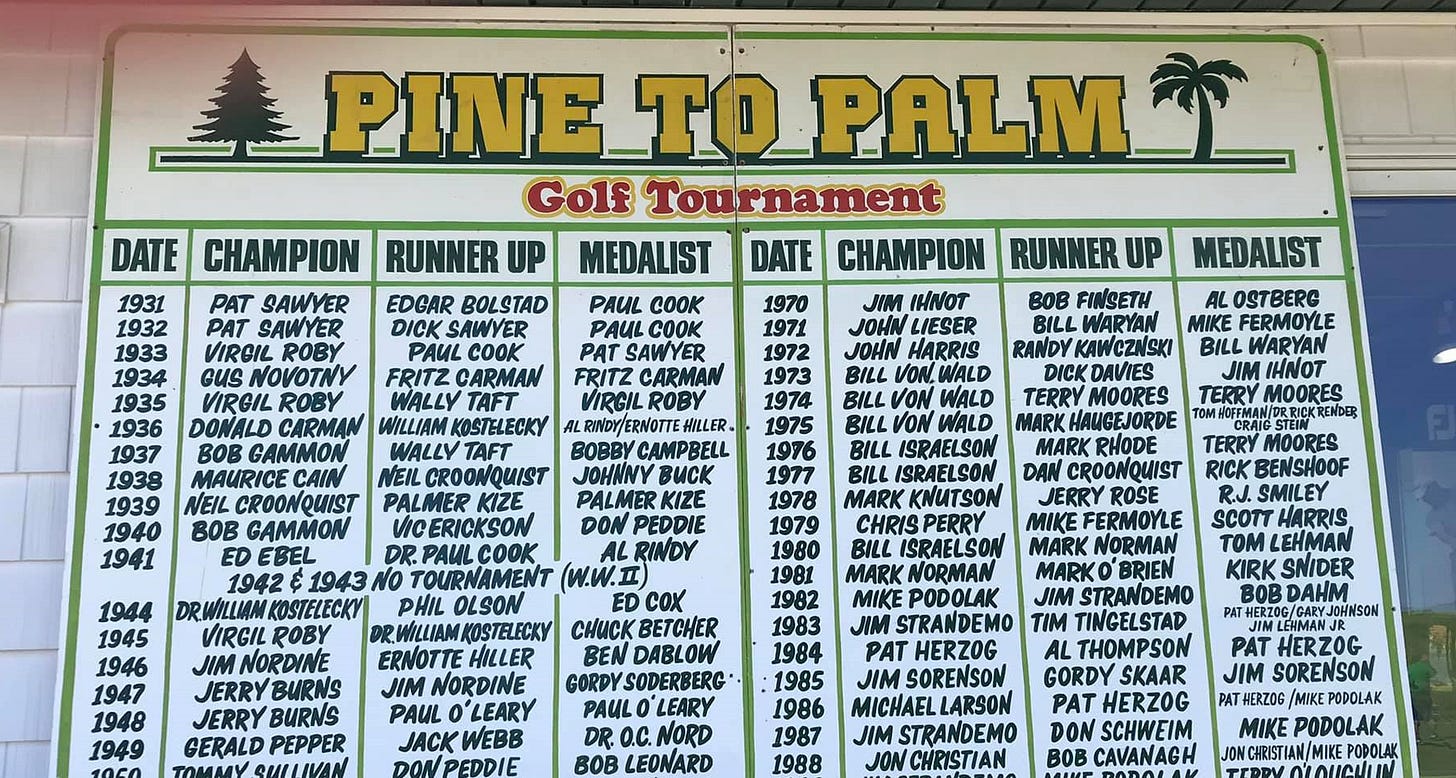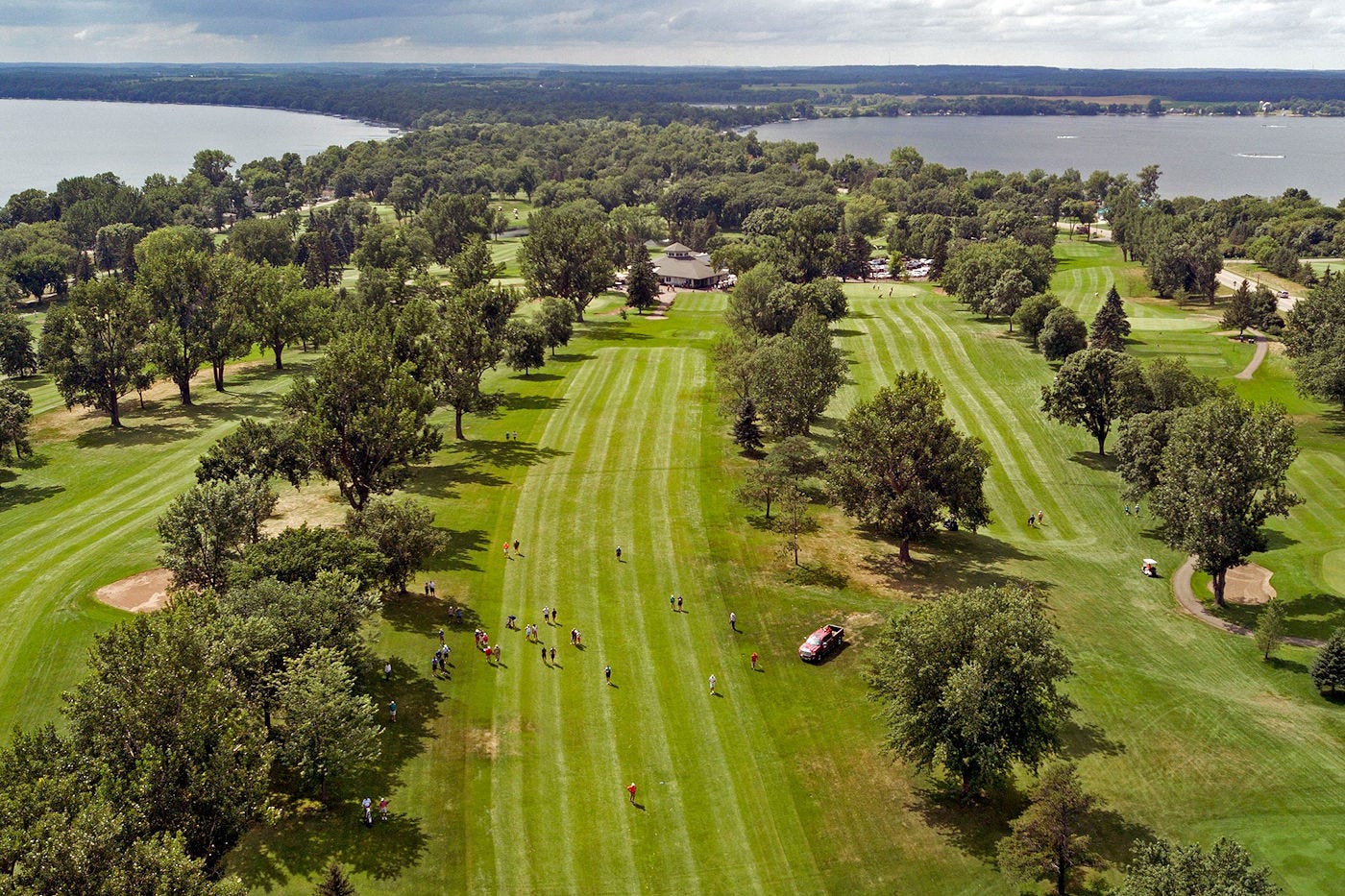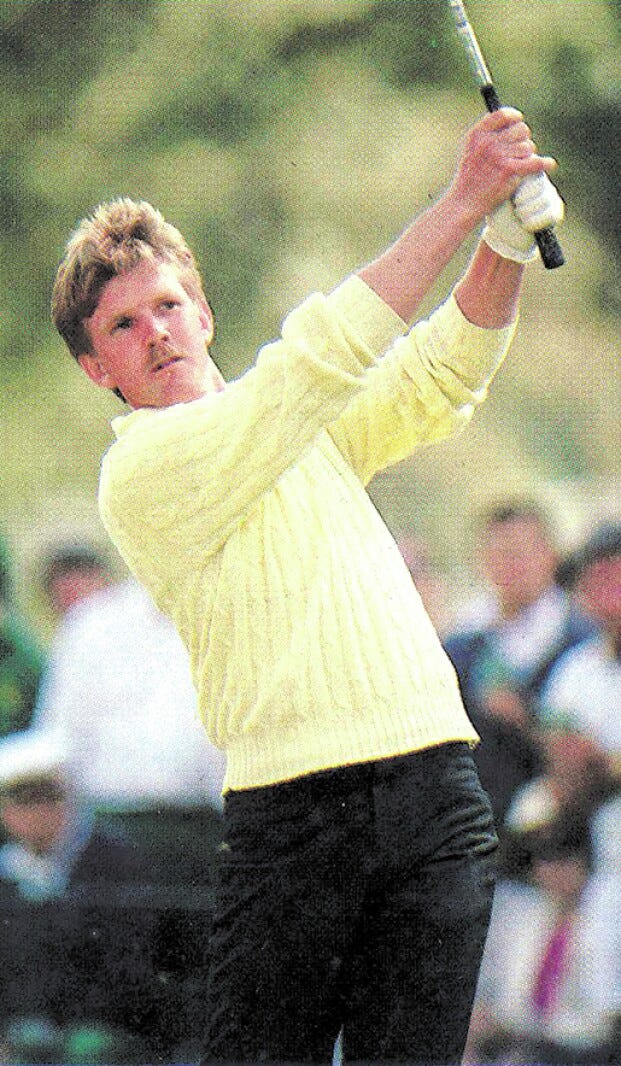Detroit Country Club
Photo: Lakes Area Radio
As a Minnesotan, when you think of Detroit Lakes, you think of dozens of beautiful lakes, We-Fest and golf. For those of us with a passion for the game, golf tops the list. The Detroit Lakes area has an abundance of golf options, but the Detroit Country Club takes center stage, partially due to the annual Pine-to-Palm tournament.
As tourists and summer residents from places like Winnipeg and Chicago started to frequent the area in the early 1900’s, chatter of the need for a golf course began. Alexandria and Bemidji already had plans to build courses, Detroit Lakes did not want to fall behind.
In 1916, the golf course at the Detroit Country Club, nestled between Lake Melissa and Lake Sallie was opened. The designer of the original nine holes is unknown, but the story goes that he was from Chicago and only in the area for a day, supposedly very full of scotch.
Photo: The Lodge on Lake Detroit
During the Great Depression in the 1930’s, it was discovered that a municipality could secure federal funding for building a golf course, as long as it was open to the public. Upon learning of this, the Board of Directors allowed the city of Detroit Lakes to take over the course and it became semi-private, like it is to this day.
Using the funding from the WPA New Deal program, the club brought in Hugh Vincent Feehan from Minneapolis to reconstruct the course in 1935. From this work and with a few tweaks here and there over decades, the Detroit Country Club took the form we see today. During this time, the club also became the first golf course west of the Mississippi River to use a completely hoseless watering system.
Legend has it that the “Pine-to-Palm” name for the tournament started in 1931, comes from the mayor of Winnipeg, Manitoba. He wanted to prove that people could drive from Winnipeg to New Orleans, Louisiana by car. The publicity provided by this “pine to palm” drive was great and the name stuck.
The Pine-to-Palm may be the youngest of the resort tournaments, but it has grown to a field of almost 500 players and attracts talented golfers from all over the country. Many former champions of the tournament have had distinguished amateur careers or success at the professional level.
Two-time champion(1982 & 1993) Mike Podolak, now playing out of Oxbow, North Dakota, holds the all-time best record for match play at 66-17 over decades of playing the event. Podolak may be best known however for winning the 1984 USGA Mid-Amateur title at Atlanta Athletic Club. This win got him into the 1985 Masters tournament. That same year he was also a member of the winning Walker Cup team at Pine Valley.
Mike Podolak at the 1985 Masters.
Photo: West Central Tribune
1972 Champion John Harris from Roseau, Minnesota went on to win the Big Ten title for the University of Minnesota in 1974. After a brief stint on the PGA Tour, Harris regained his amateur status and eventually went on to win the 1993 USGA Amateur Championship at Cypress Creek.
Former world number one and British Open champion Tom Lehman was the Pine-to-Palm medalist in 1980, but was defeated in the second round of match play. He was never able to capture the title as he did at the Resorters on his home course.
One of the best seasons in Minnesota amateur golf history was capped off at the Pine-to-Palm in 1998 by champion James McLean from Australia. Earlier that year, McLean won the NCAA individual title, Minnesota state amateur and state open titles. The Pine-to-Palm championship was just icing on the cake.
2022 AT&T Pebble Beach Champion and current number forty-ninth ranked player in the world, Tom Hoge, from Fargo, North Dakota won the 2009 Pine-to-Palm while playing his college golf at TCU.
Photo: In Forum
Detroit Country Club, while shorter and less sloped than the other resort tournament courses, offers a different challenge to tournament golfers, strategy. With three par 4’s under 300 yards and the longest par 5 at 511 yards, the Detroit Country Club is set up perfectly to play more reserved in qualifying and more risky in match play when the situation calls for it.
The abundance of risk/reward holes is most evident with back-to-back drivable par 4’s on holes six and seven. Both can be played very conservatively off the tee with an iron that sets up a short wedge shot or players can give it a go and try to drive the green.
The sixth hole plays slightly downhill from an elevated tee box next to the clubhouse and is 282 yards in length. Trouble lurks down the right side as out of bounds comes into play, and a short somewhat benign hole could cause havoc on the scorecard. Once you have navigated the tee shot, you are left with a fairly simple wedge or chip for the approach shot to a flat green.
During the Pine-to-Palm, you will often see this hole played two ways depending on the day. During qualifying rounds many players will be more conservative off the tee with an iron to keep from making a big number. Once match-play starts, most will play aggressively and attack the green as the hole is somewhat early in the round and a birdie may be needed just to tie the hole.
Next you go right into another short, and for some, drivable par 4 with hole number seven. This hole plays uphill and at 286 yards is only reachable for the longer hitters when playing the back tees. Strategy is needed on the tee shot as the fairway cants to the right and an elevated green is protected by a bunker in front. With out of bounds to the left, most players going for this green err on the side of caution and play it down the right side. Missing the green most assuredly results in the ball bounding right into the rough, making for a touchy approach shot.
During the match-play portion of the Pine-to-Palm tournament, these short par 4’s and reachable par 5’s on the course offer up some drama as eagles can be made. For the everyday golfer, the ability to reach par 4’s off the tee and get to all the par 5’s in two make the Detroit Country Club a very enjoyable round of golf, even for the non- competitive golfer.
Par 5 1st hole
Photo: Minnesota Golf Trail
The beauty of playing Detroit Country Club is that you can stack it with other courses in the area such as Wildflower or Perham Lakeside to make it a great 36 hole day. Fall is a great time to check it out, as the crowds are gone for the season in lake country and tee times are more available.
After reading parts one and two about the big three Minnesota resort tournaments, you may be asking yourself, has anyone ever won all three in the same summer? The answer to that question is YES. In 1965, Ken Pinns won sixteen consecutive matches on his way to becoming the only player to ever win the Minnesota resort tournament triple crown. With so many good amateurs playing today, he may end up being the only player that ever accomplishes this trifecta.








